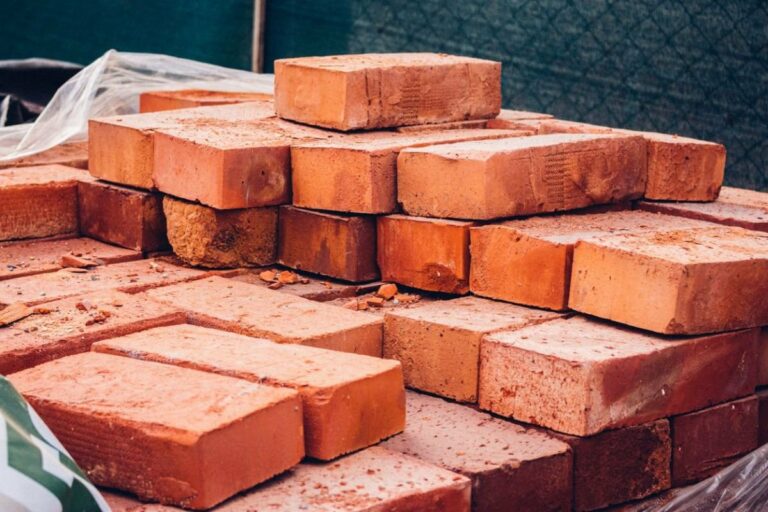How to Get Rid of Furniture Beetles Naturally
Dealing with furniture beetles in your home? No need to panic. You can eliminate them naturally without using harsh chemicals or costly professional treatments.
In this article, we’ll guide you through eco-friendly solutions to effectively remove furniture beetles from your space.
Say goodbye to these unwanted visitors and restore your furniture’s beauty naturally. Let’s explore how to naturally eradicate furniture beetles.
How to Get Rid of Furniture Beetles Naturally
Identify the Problem:
Understanding Furniture Beetles:
Furniture beetles, also known as woodworms or wood-boring beetles, are common pests that can cause significant damage to furniture and wooden structures.
They lay their eggs within the wood, and the larvae feed on the wood fibers, progressively weakening the structure over time. Identifying the presence of furniture beetles is crucial in effectively treating the infestation.
Signs of Furniture Beetle Infestation:
– Small holes on wooden surfaces: Look for tiny round holes, typically 1-2mm in diameter, which indicate exit points for adult beetles.
– Fine wood dust: Known as frass, this is a powdery substance produced by furniture beetle larvae as they burrow through the wood.
– Weak or damaged wood: Observe any hollow or weakened areas in the furniture or structural wood.
– Adult beetles: Though less common, you might spot adult beetles crawling around infested areas.
Confirming the Infestation:
If you suspect a furniture beetle infestation, it is recommended to consult with a professional pest control service or an entomologist for accurate identification and assessment.
Natural Prevention and Control Methods:
Increased Air Circulation and Moisture Control
Furniture beetles thrive in damp and humid conditions. By improving air circulation and reducing moisture levels, you can make your furniture less hospitable to these pests. Consider the following measures:
– Use dehumidifiers or fans to improve air circulation and reduce moisture levels.
– Fix any leaks or plumbing issues causing excessive moisture buildup.
– Avoid placing wooden furniture in areas prone to dampness, such as basements or attics.
Regular Cleaning and Inspection:
Regularly cleaning and inspecting your furniture can help you identify early signs of infestation and prevent a minor issue from becoming a major problem. Here’s what you can do:
– Dust and vacuum your furniture frequently to remove any eggs or larvae.
– Inspect the furniture for any signs of damage, including small holes and frass.
– Pay close attention to hidden or hard-to-reach areas, such as joints and crevices.
Temperature Control:
Extreme temperatures can be detrimental to furniture beetles. By subjecting infested items to high or low temperatures, you can eliminate the pests naturally. Consider the following methods:
– Heat treatment: Place infested furniture in a specially designed heat chamber or expose it to temperatures above 50°C (122°F) for several hours.
– Freezing treatment: If the size allows, you can place smaller infested items in a freezer at -18°C (0°F) or lower for at least one week.
4. Nontoxic Insecticides
Several natural insecticides can effectively control furniture beetle populations without posing significant harm to humans or pets. Here are a few options:
– Diatomaceous earth: This powdery substance, made from the fossilized remains of marine algae, acts as a desiccant that dries out and kills insects.
– Boric acid: Commonly used in powder form, boric acid disrupts the exoskeleton of furniture beetles and dehydrates them.
– Essential oils: Some essential oils, such as cedarwood, tea tree, or neem oil, have insect-repellent properties and can be sprayed on infested furniture.
Best Practices for Treating Infested Furniture:
Isolation and Quarantine:
Separating infested furniture from unaffected items can help contain the problem and prevent further spread. Follow these steps:
– Move the infested furniture away from other wooden items to minimize the risk of beetle transfer.
– Isolate the infested furniture in a well-ventilated area, preferably outdoors, to reduce the chance of cross-contamination.
Surface Treatment:
Treating the surface of infested furniture is necessary to eliminate any active beetles or eggs present. Consider the following methods:
– Use a soft brush to remove any loose frass or debris from the surface.
– Apply an appropriate natural insecticide, as discussed earlier, following the manufacturer’s instructions.
– Repeat the treatment as recommended to ensure effectiveness.
Wood Treatment
Since furniture beetles lay their eggs within the wood, it is crucial to treat the affected wooden structure to eradicate hidden larvae. Follow these steps:
– Create small holes in the infested areas using a fine drill bit to allow insecticide penetration.
– Inject the chosen natural insecticide into the holes, targeting the larvae burrows.
– Seal the holes with wooden plugs or putty to restore the furniture’s appearance.
Restoration and Protection
After treating the infested furniture, it is important to restore its structural integrity and protect it from future damage. Consider the following measures:
– Repair any damaged or weakened areas using appropriate wood glue or filler.
– Apply a protective finish, such as varnish or paint, to seal the wood and prevent future infestations.
– Regularly monitor and clean the furniture to identify any signs of reinfestation early on.
When to Seek Professional Help:
While natural methods can be effective for minor infestations, severe or widespread furniture beetle problems may require professional intervention. Consider contacting a pest control service in the following situations:
– Large-scale infestations affecting multiple pieces of furniture or entire structures.
– Repeated infestations despite DIY treatment efforts.
– Limited experience or knowledge in handling furniture beetle infestations.
– Valuable or antique furniture that requires specialized care.
Faqs for How to Get Rid of Furniture Beetles Naturally:
Furniture beetles, also known as woodworms, are small insects that infest and damage wooden furniture.
They lay eggs on the surface of the wood, and when the larvae hatch, they burrow into the wood, creating tunnels and feeding on it. This can weaken and compromise the structural integrity of the furniture over time.
Look for small round exit holes in the wood, usually around 1-2mm in diameter. These are signs that adult beetles have emerged.
You may also notice fine wood dust or frass around the holes, as well as weak and crumbling wood. Additionally, you might see adult beetles crawling on or near the furniture.
Absolutely! A commonly used natural method involves exposing the infested furniture to high temperatures. This can be done by placing the furniture in direct sunlight or using a heat treatment. Another natural option is to apply essential oils such as tea tree oil or neem oil, as their strong scents repel beetles.
Vinegar is not an effective treatment for furniture beetle infestations. While it may help clean the furniture’s surface, it does not kill the beetles or their larvae inside the wood. It’s best to use methods specifically designed to eliminate wood-boring beetles.
To prevent furniture beetles, it’s important to take proactive measures. Ensure that the wood used in your furniture is properly seasoned and treated to deter infestations. Regularly inspect your furniture for signs of infestation and address any issues promptly. Additionally, keep your home clean and free of excess moisture, as damp conditions can attract beetles.
Using natural predators like parasitic wasps or beetles to control furniture beetle populations is not typically feasible indoors. These predators are more commonly used in outdoor environments or under specific controlled conditions. It’s best to rely on proven natural methods or seek professional assistance to effectively eliminate furniture beetles.
Final Thoughts
To sum up, natural ways can effectively eliminate furniture beetles. Cleaning and vacuuming the affected area regularly helps to remove eggs and larvae. Natural repellents like cedar or lavender essential oils can also deter beetles from infesting furniture. Proper ventilation and temperature control are important in discouraging beetle activity.
By following these natural solutions, one can effectively deal with and prevent furniture beetle infestations without relying on harmful chemicals or toxins. In conclusion, these methods offer a safe and eco-friendly alternative for getting rid of furniture beetles naturally.



